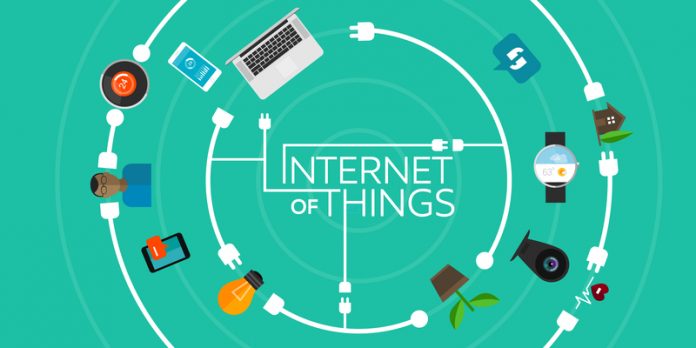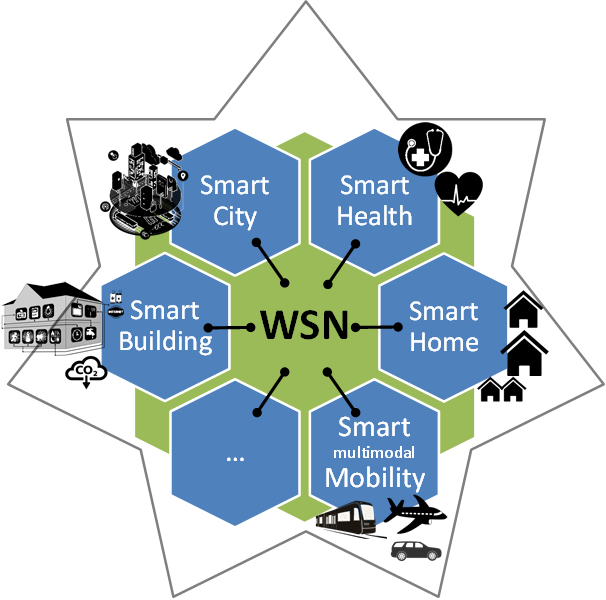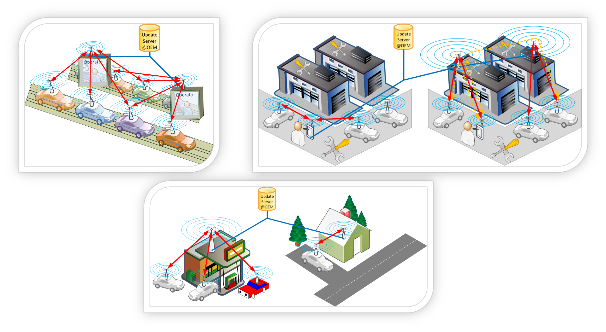Dr. Werner Rom, Head of Department Cross Domain at the VIRTUAL VEHICLE Research Center highlights a key enabler to the Internet of Things…
Wireless sensor networks (WSN) are a key to achieve the full potential of the future Internet of Things (IoT). They will significantly increase the level of flexibility for citizens, including professional users, in their everyday lives and environment, by providing new areas of services and applications. Yet, important challenges still have to be overcome, and the VIRTUAL VEHICLE Research Center, an industry-driven applied research center in Graz/Austria, is working at the forefront of WSN, making them dependable, secure and trustable.
Figure 1. Dependable, secure and trustable Wireless Sensor Networks (WSN) as a key enabler to the Internet of Things, making possible new services and areas of application.
Advantages of wireless solutions
Wireless solutions provide numerous key benefits and enable novel services and applications compared to wired solutions:
- Reducing weight in weight-sensitive environments (i.e. less cabling);
- Enabling novel “bring your own device” applications (e.g. using smart phones);
- Providing redundant backups to wired solutions;
- Easing configuration and self-configuration of systems;
- Increasing flexibility and re-configurability;
- Eliminating errors from faulty wiring, by self-managed wireless networks;
- Increasing reliability through monitoring for reduced tear and wear;
- Facilitating easy, cost-effective feature updates;
- Reducing installation costs, by simplified deployment procedures;
- Enabling easy switching of network topologies, etc.
Challenges of wireless solutions
However, there are specific reasons and factors why wired solutions are still dominant in many areas, services and applications, although things are rapidly improving:
First, there is the comparable low degree of dependability. Dependability, an all-encompassing term that considers the reliability, availability, maintainability, safety, as well as integrity, is the ability of a system or a product to deliver its intended level of service to its users, especially in the light of failures or other incidents that impinge on its level of service.
Second, although security and privacy considerations are not new in the context of information and communication technology, WSN and the IoT provide new and unique security and privacy challenges[1]. Due to the ever increasing amount of devices connected to the IoT, numerous additional entry points for cyber-attacks are generated. Furthermore, since WSN and IoT open up new ways how to collect, analyse and use personal data, people are concerned about surveillance, tracking and other misuse.
And, there is still a lack of interoperability. Current wireless solutions do not have the common reference design and service-oriented architecture needed to build a market environment where competition enables lower prices for the users.
To increase trust of private and professional users in WSN solutions, and thus to accelerate the full market uptake of wireless solutions and of IoT as a whole, all the factors mentioned have to be taken seriously into consideration.
DEWI – Dependable Embedded Wireless Infrastructure[2], led by the VIRTUAL VEHICLE Research Center in Graz/Austria – is a large pan-European initiative on WSN and wireless communication in the areas of transportation and building automation. It involves 58 key players from 11 EU countries, with a total budget of €40m for 3 years. Since 2014 DEWI is preparing the ground for the broad introduction of dependable wireless systems by a strong symbiosis between industry, research, and education. The focus of DEWI is clearly on dependability and interoperability, rather than on security and privacy aspects.
DEWI utilises a use-case driven approach with more than 20 use cases from different areas of high relevance to European society and industry. The use cases of DEWI range from telemetry loggers for sounding rockets, active flow control for airplanes, wireless sensors for trucks, monitoring of off-road vehicle operators, wireless automotive software updates solutions concerning train integrity and composition, as well as freight monitoring, to housing energy optimisation, building security, and facility operation and maintenance. A comprehensive overview on these use cases, highlighting the advantages of dependable wireless solutions in the automotive, aeronautics, rail and building automation domains and also addressing the related challenges has been issued in May 2016 and is publicly available[3].
Figure 2. Wireless update of software for automotive electronic control units in three different scenarios (wireless update in an assembly line, top left; in a workshop; top right; and remote updates and wireless updates at home, bottom), as developed in the DEWI project.
To foster cross-domain reusability, scalability, and interoperability of its solutions, DEWI has developed a standardised multi-domain reference architecture, being fully compliant with the international standard series ISO 29182 – Sensor Network Reference Architecture[4]. This architecture thus will be comprehensively beneficial for all future WSN applications in smart mobility, smart society, smart energy, smart health or smart production.
The future of WSN still faces many challenges. Those developed in one industrial domain will be reusable in others (e.g. automotive, aeronautics, rail, health, or industrial automation), to make better use of economies of scale. Design and development of the security of WSN are currently still quite separated from other areas. However, security may severely affect safety but also reliability, privacy etc. Therefore co-design and co-development of solutions concerning safety, security, reliability or privacy are a must. Furthermore, one has to consider tradeoffs between those parameters as well as costs for certain services and applications, requiring multidimensional optimisation. WSN being fully safe and secure but leading to inacceptable costs or zero data throughput will never be introduced to the market.
Privacy and building trust in products (systems, services or applications), will the main deciding factor between success and failure in the IoT business. Therefore user’s experience has to be taken really seriously and has to follow a user-centered design to put security and privacy really in the hands of the user. Activation and configuration of security and privacy have to be simplified, and a common, internationally recognised accepted metrics for ‘measurable security and privacy’ still has to be developed.
The IoT or the concept of ‘system of systems’ can only be realised if WSN are connected to each other and to the cloud (or backbone) using new communication technologies such as 5G to cope with the increased amount of data and real-time requirements (e.g. for automated driving), etc.
VIRTUAL VEHICLE will – together with its large European partner network from industry and academia and as a member of AIOTI, the Alliance for the Internet of Things Innovation[5], which was launched by the European Commission and today is the largest European IoT ecosystem – further significantly contribute to overcome these challenges. VIRTUAL VEHICLE is currently about to prepare new pan-European activities and projects focusing particularly on security and privacy to make wireless sensor network solutions more secure and trustable to eventually allow the full potential of IoT come true.
Acknowledgement
The research from DEWI project leading to these results has received funding from the ARTEMIS Joint Undertaking under grant agreement n°621353. The author further acknowledges the financial support of the COMET K2 – Competence Centres for Excellent Technologies Programme of the Austrian Federal Ministry for Transport, Innovation and Technology (BMVIT), the Austrian Federal Ministry of Science, Research and Economy (BMWFW), the Austrian Research Promotion Agency (FFG), the Province of Styria and the Styrian Business Promotion Agency (SFG).
[1] The Internet of Things: An Overview. (October 2015). The Internet Society. 50pp.
[3] http://www.dewiproject.eu/wp-content/uploads/2016/06/DEWI_A5_final_web.pdf
[4] ISO/IEC 29182 Information technology — Sensor networks: Sensor Network Reference Architecture (SNRA). 7 parts. (2013-2015). International Organization for Standardization.
Dr. Werner Rom
Head of Department Cross Domain
VIRTUAL VEHICLE Research Center
werner.rom@v2c2.at
Please note: this is a commercial profile













